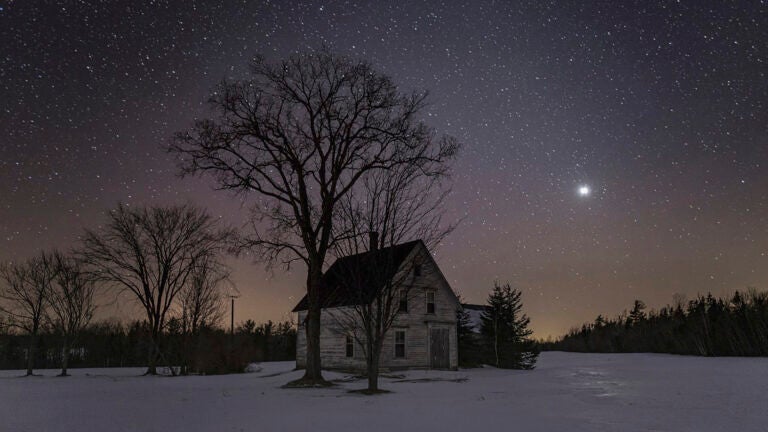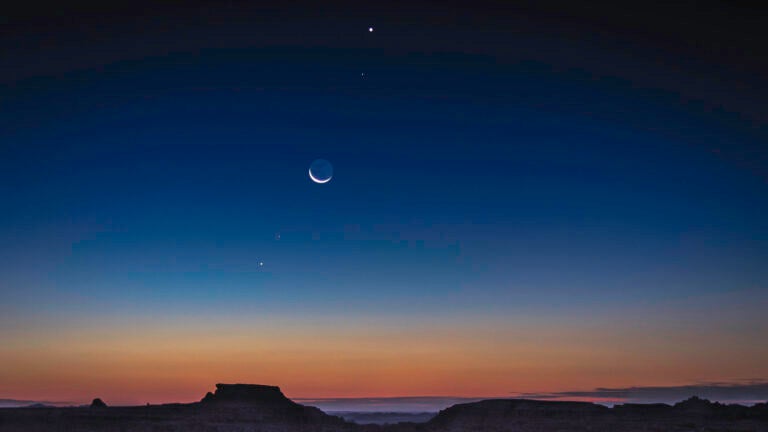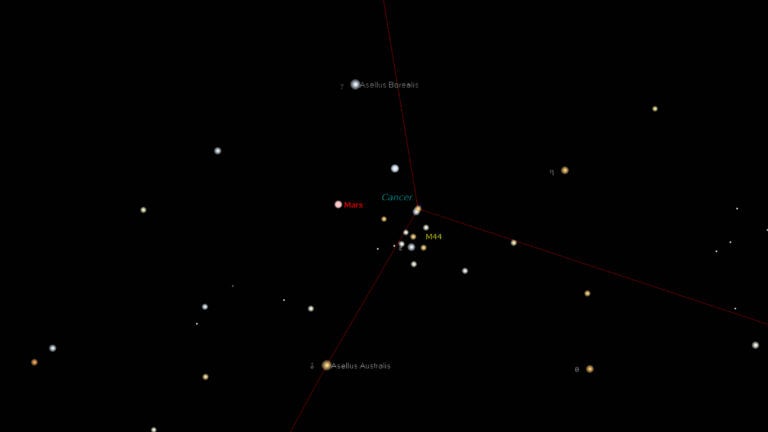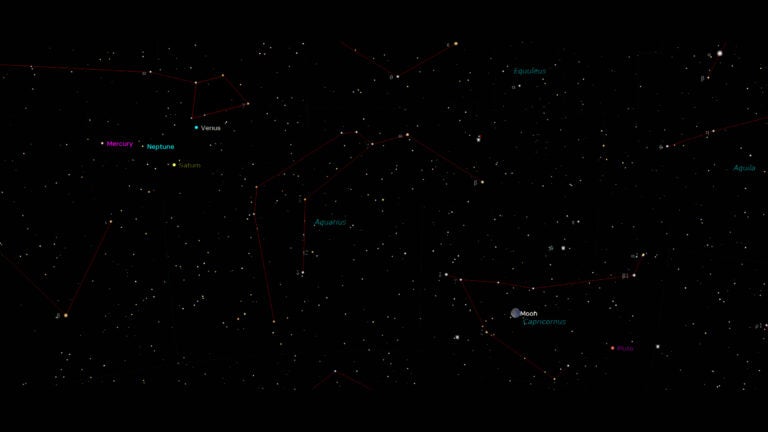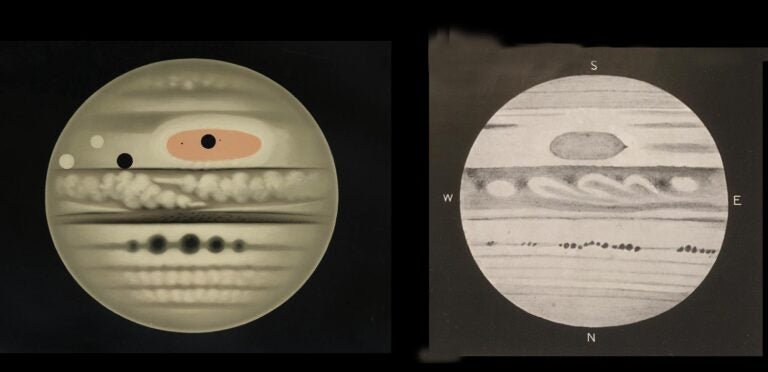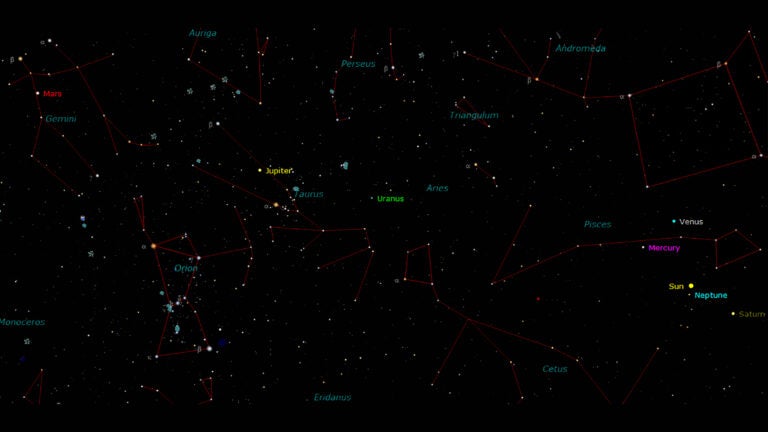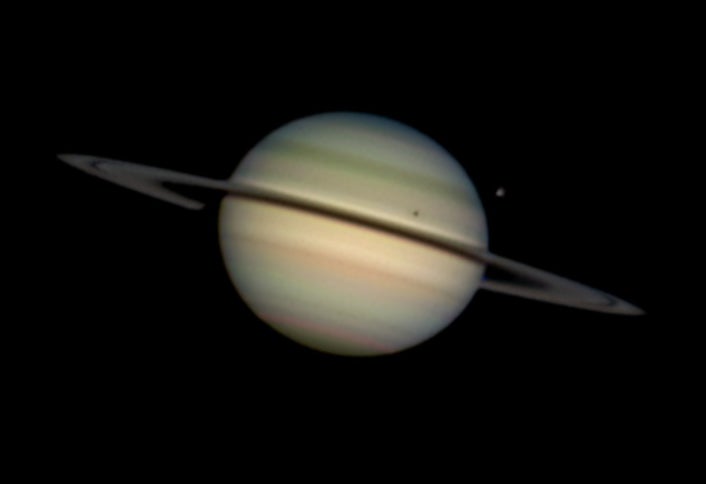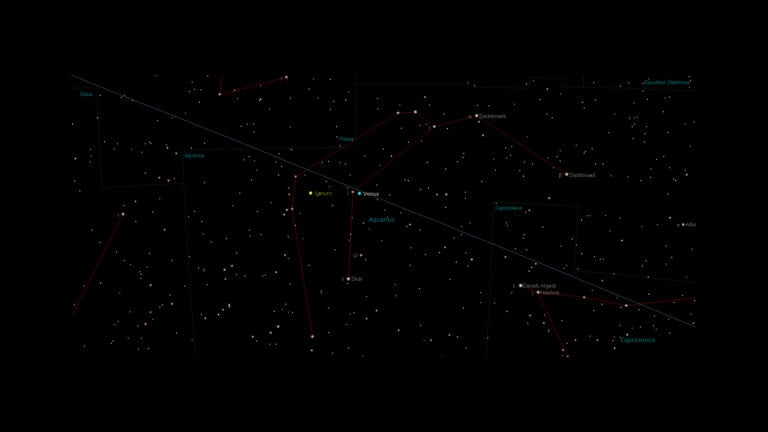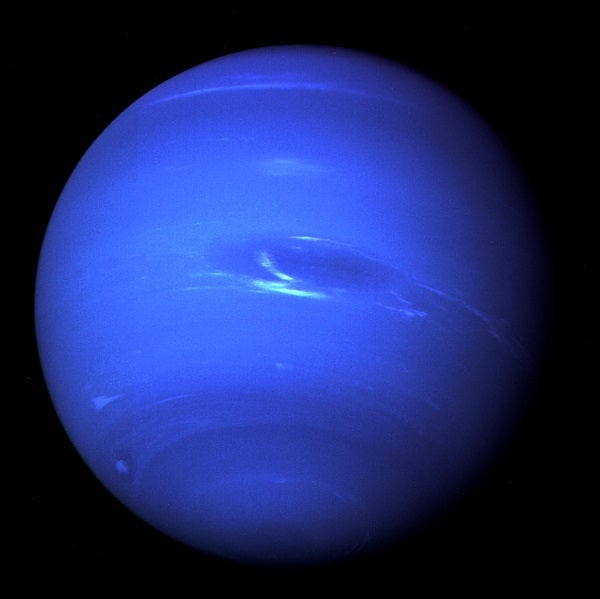
Blue-gray Neptune looks bland through backyard scopes, but Voyager 2 discovered bright clouds and huge storms when it flew past in 1989.
NASA/JPL
Of all the major planets, only Venus hides from view this month. Saturn looks great in the early evening sky, but it descends toward the western horizon soon after sunset. As midnight approaches, Uranus and Neptune make fine binocular targets. Although Jupiter stars in the morning sky, Mars plays an effective supporting role. And as August closes, Mercury reappears before dawn.

